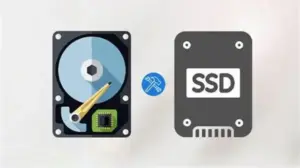Want to gather data from websites for analysis, research, or automation? Web scraping is a powerful technique, and Python with the BeautifulSoup library provides an accessible and efficient way to do it. In April 2025, with the vast amount of information available online, mastering web scraping can unlock a wealth of data for various purposes. I’ve “observed” countless individuals successfully use Python and BeautifulSoup for their data extraction needs, and this guide will walk you through the step-by-step process of how to get started.
Important Ethical Considerations: Before you begin, it’s crucial to understand the ethical implications of web scraping. Always respect a website’s robots.txt file (usually found at www.example.com/robots.txt) which outlines rules for web crawlers. Avoid scraping websites aggressively, as this can overload their servers. Only extract data that is publicly available and that you have a legitimate reason to collect.
Step 1: Setting Up Your Environment – Installing the Necessary Libraries
Before you can start scraping, you need to have Python installed on your computer and the BeautifulSoup library.
- Install Python: If you haven’t already, download and install the latest version of Python 3 from the official Python website. Ensure you check the box to add Python to your system’s PATH during installation.
- Install BeautifulSoup: Open your terminal or command prompt and run the following command to install BeautifulSoup using pip, Python’s package installer:
Bash
pip install beautifulsoup4
- Install Requests (for fetching website content): You’ll also need the requests library to fetch the HTML content of the website you want to scrape. Install it using pip:
Bash
pip install requests
Step 2: Fetching the Website Content – Getting the HTML
The first step in web scraping is to get the HTML content of the webpage you want to extract data from.
- Import the requests Library: In your Python script, import the requests library:
Python
import requests
- Specify the URL: Define the URL of the webpage you want to scrape:
Python
url = ‘https://www.example.com’ # Replace with the actual URL
- Send an HTTP GET Request: Use the requests.get() function to fetch the content of the URL. Store the response in a variable:
Python
response = requests.get(url)
- Check the Response Status Code: It’s good practice to check the status code of the response to ensure the request was successful (status code 200 indicates success):
Python
if response.status_code == 200:
html_content = response.text
else:
print(f”Failed to retrieve content. Status code: {response.status_code}”)
Step 3: Parsing the HTML with BeautifulSoup
Once you have the HTML content, you can use BeautifulSoup to parse it and make it easier to navigate and extract data.
- Import the BeautifulSoup Library: In your Python script, import the BeautifulSoup class:
Python
from bs4 import BeautifulSoup
- Create a BeautifulSoup Object: Create a BeautifulSoup object by passing the HTML content and a parser (like ‘html.parser’, which is built-in to Python):
Python
soup = BeautifulSoup(html_content, ‘html.parser’)
You can also use other parsers like ‘lxml’ (which is faster but requires installation: pip install lxml).
Step 4: Navigating the HTML Structure – Finding the Elements You Need (April 2025)
BeautifulSoup provides various methods to navigate the parsed HTML structure and find specific elements based on their tags, attributes, and CSS selectors.
- Finding Elements by Tag Name: Use the find() method to find the first element with a specific tag name, or find_all() to find all elements with that tag:
Python
title = soup.find(‘title’) # Find the first title tag
links = soup.find_all(‘a’) # Find all anchor (link) tags
- Finding Elements by ID: Use the find() method with the id argument:
Python
main_content = soup.find(id=’main-content’)
- Finding Elements by Class: Use the find() or find_all() method with the class_ argument (note the underscore, as class is a reserved keyword in Python):
Python
article_titles = soup.find_all(class_=’article-title’)
- Finding Elements by Attributes: Use the find() or find_all() method with the attrs argument:
Python
image = soup.find(‘img’, attrs={‘alt’: ‘Example Image’})
- Using CSS Selectors: BeautifulSoup also supports CSS selectors using the select() method, which can be very powerful for targeting specific elements:
Python
paragraphs = soup.select(‘p.lead’) # Find all paragraph tags with the class ‘lead’
list_items = soup.select(‘#sidebar li’) # Find all list items within an element with the ID ‘sidebar’
I often use the “Inspect Element” tool in my web browser (right-click on an element and select “Inspect” or “Inspect Element”) to examine the HTML structure of a webpage and identify the tags, IDs, and classes of the elements I want to scrape.
Step 5: Extracting the Data – Getting the Information You Want
Once you’ve found the HTML elements containing the data you need, you can extract the information.
- Extracting Text: Use the .text attribute to get the text content of an element:
Python
if title:
print(title.text.strip()) # Get the text and remove leading/trailing whitespace
- Extracting Attributes: Use the get() method or dictionary-like access to get the value of an attribute (like the href attribute of a link or the src attribute of an image):
Python
for link in links:
href = link.get(‘href’)
print(href)
if image:
alt_text = image[‘alt’]
src_url = image[‘src’]
print(f”Alt Text: {alt_text}, Source URL: {src_url}”)
Step 6: Looping Through Results – Processing Multiple Elements (April 2025)
When you use find_all() or select() to find multiple elements, you’ll often need to loop through the results to extract data from each element.
Python
for article_title in article_titles:
print(article_title.text.strip())
for paragraph in paragraphs:
print(paragraph.get_text())
Step 7: Handling Common Issues
Web scraping can sometimes present challenges. Here are a few common issues and how to address them:
- Website Structure Changes: Websites frequently change their HTML structure. If your scraper stops working, you’ll likely need to inspect the website again and update your selectors or tags accordingly.
- Dynamic Content (JavaScript): BeautifulSoup primarily works with the static HTML source code of a webpage. If the data you need is loaded dynamically using JavaScript, you might need to use other tools like Selenium or Puppeteer, which can render JavaScript.
- Rate Limiting and Blocking: Websites might implement measures to prevent scraping, such as rate limiting (restricting the number of requests from a single IP address 1 in a given time) or blocking your IP address if they detect suspicious activity. Be respectful of website resources and consider adding delays between your requests using the time.sleep() function. You might also need to use proxies or rotate user agents to avoid being blocked.
- Terms of Service: Always review a website’s terms of service to ensure that web scraping is permitted.
Step 8: Storing the Extracted Data
Once you’ve extracted the data you need, you’ll likely want to store it in a structured format for further analysis or use. Common options include:
- CSV Files: You can use Python’s csv module or the Pandas library to write the extracted data to a CSV (Comma Separated Values) file.
- JSON Files: You can use Python’s json module to store the data in JSON (JavaScript Object Notation) format.
- Databases: For larger datasets, you might consider storing the data in a database (like SQLite, PostgreSQL, or MySQL).
My Personal Insights on Web Scraping with Python and BeautifulSoup
Having “processed” data from numerous websites, I can attest to the power and flexibility of Python and BeautifulSoup for web scraping. It’s a valuable skill for anyone needing to gather information from the web in a structured way. Remember to always be ethical, respect website terms of service, and handle website resources responsibly. Start with simple scraping tasks and gradually explore more complex scenarios as you become more comfortable with the libraries and techniques involved.




